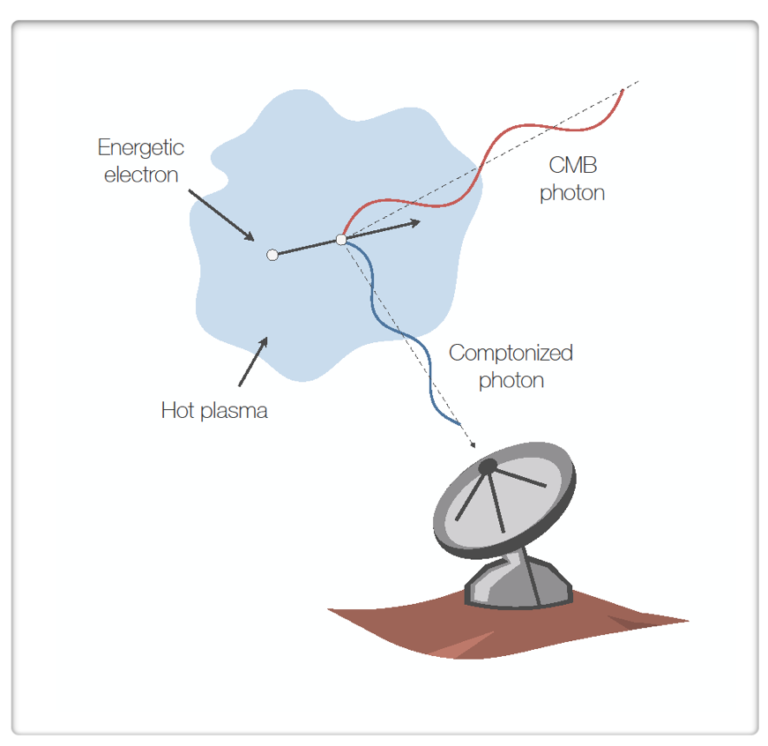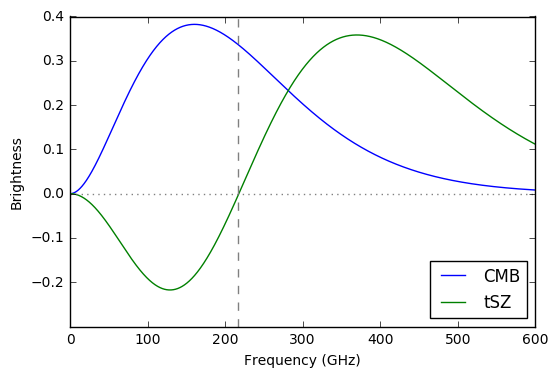Star formation plays a key role in a galaxy’s evolution. For old
galaxies filled with old, red stars, there has to have been something keeping stars from forming for most of their lifetimes. It is thought that feedback, in the form of energy form the active center of the galaxies (Active Galactic Nuclei – AGN) prevented stars from forming. How can we measure this feedback to determine if this is true? One way astronomers do this is with the Sunyaev-Zeldovich Effect.
To get to the idea of the Sunyaev-Zeldovich effect we first need to consider the very young universe. Shortly after the big bang, universe
was very hot – and hot everywhere. Hot things release light, or photons, and astronomers call the photons coming from the hot early universe the Cosmic Microwave Background or CMB for short. Cosmic ’cause it’s space; Microwave because the wavelength of these photons are microwave sized; and Background because it’s everywhere, in the background.
These early universe photons can be deflected by electrons just hanging about in space, typically near massive galaxies. If we think of the photon as a tiny bouncy ball and an electron as a big beach ball floating in space, we can imagine that the bouncy ball could bounce off the beach ball. Most of the time when the photon bounces off, or is scattered by, the electron it ends up with more energy than it had in the first place. Imagine the bouncy ball and the beach ball again. If the beach ball is moving 50 miles an hour towards the bouncy ball, and they collide, the bouncy ball will be going faster after the collision than before – because the thing that hit it was going so fast! If the bouncy ball is moving faster, it has more energy. For photons, having more energy means that they are at a higher frequency – they are ‘bluer light’.

So if you have a lot of photons and electrons that are colliding this way, the average energy of the photons shifts upward as more and more photons are gaining energy in the collisions. The number of photons at higher frequencies is increasing while the number of photons at lower frequencies is decreasing. For the Sunyaev-Zeldovich effect there is a magic number for this shift – 217 GHz. The photons that had frequencies smaller than 217 GHz gain energy and end up with frequencies higher than 217 GHz.
If you use a telescope to look at a galaxy and look at frequencies just below 217 GHz and just above 217 GHz, the idea is that you’ll see that at just below 217 GHz the light is dimmer than expected and just above 217 GHz the light is brighter than expected.

Green: Brightness expected due to the Sunyaev-Zeldovich Effect.
Dashed Line: 217 GHz
By measuring this difference in light, astronomers can estimate the energy that may have been deposited into the gas around galaxies by the AGN. If it is higher than expected due to gravity alone, we can conclude that AGN’s do impact the star formation within a galaxy over its lifetime.

No responses yet